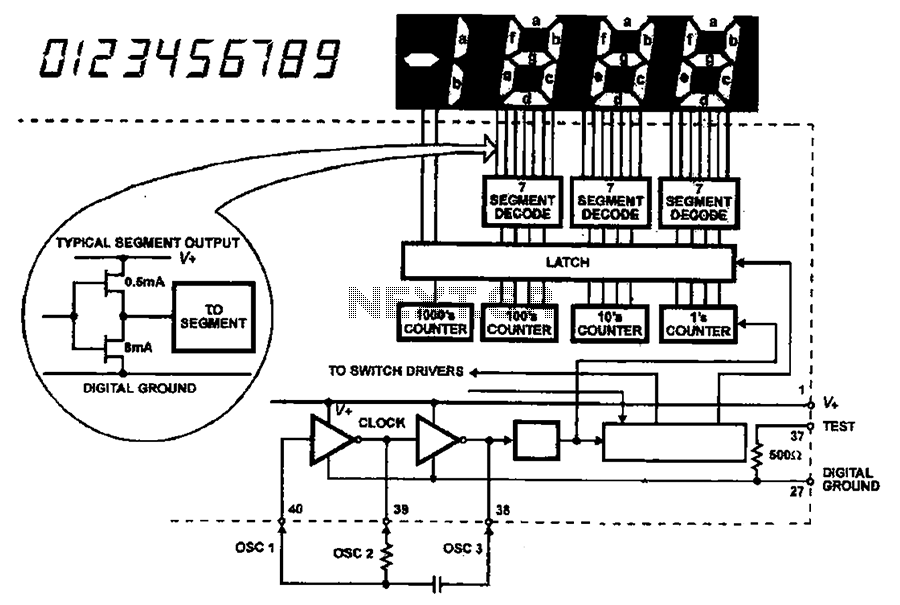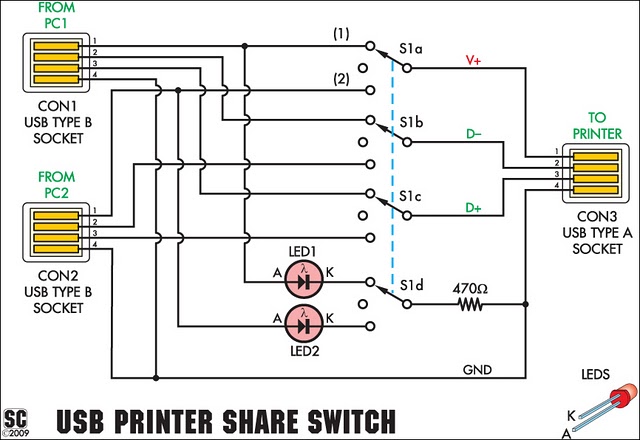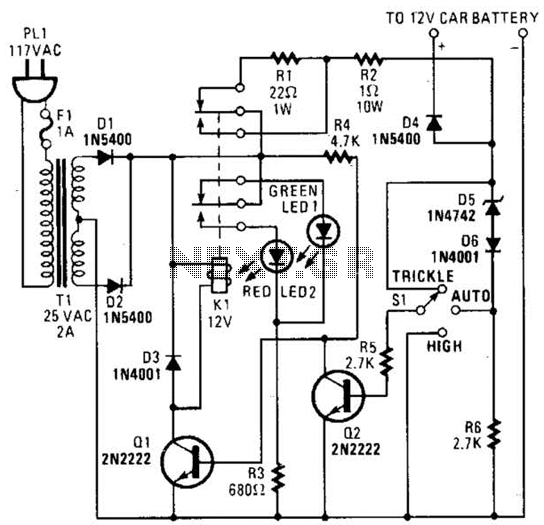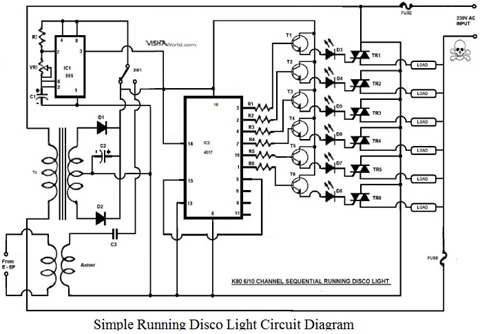
Flash light emitting diode display circuit

The multivibrator flashing light emitting diode (LED) display driver circuit can be utilized in toys, creating flashing effects in the eyes of animals or monsters.
This circuit employs a multivibrator configuration, typically a 555 timer IC or a similar component, to generate a square wave output that drives one or more light-emitting diodes (LEDs). The multivibrator can be configured in astable mode, which allows it to continuously oscillate between high and low states, thereby producing a flashing effect.
In the proposed circuit, the 555 timer is connected with appropriate resistors and capacitors to set the desired frequency of the flashing LEDs. The output pin of the timer is connected to the anode of the LED, while the cathode is connected to ground through a current-limiting resistor. This resistor is crucial as it ensures that the current flowing through the LED does not exceed its maximum rating, thus preventing damage.
Additionally, the circuit can be enhanced by incorporating multiple LEDs in parallel or series to create various visual effects, such as simulating the blinking of eyes. The choice of LED colors can also be varied to achieve different aesthetic results.
Powering the circuit can be accomplished using batteries or a DC power supply, depending on the intended application. For toys, a compact battery solution is often preferred for portability.
In summary, this multivibrator-based LED display driver circuit provides an engaging visual effect suitable for toy applications, effectively simulating the blinking of eyes in animals or monsters. As shown by the multivibrator flashing light emitting diode display driver circuit can be used in toys in the eyes of animals or monsters double eyes flash.
This circuit employs a multivibrator configuration, typically a 555 timer IC or a similar component, to generate a square wave output that drives one or more light-emitting diodes (LEDs). The multivibrator can be configured in astable mode, which allows it to continuously oscillate between high and low states, thereby producing a flashing effect.
In the proposed circuit, the 555 timer is connected with appropriate resistors and capacitors to set the desired frequency of the flashing LEDs. The output pin of the timer is connected to the anode of the LED, while the cathode is connected to ground through a current-limiting resistor. This resistor is crucial as it ensures that the current flowing through the LED does not exceed its maximum rating, thus preventing damage.
Additionally, the circuit can be enhanced by incorporating multiple LEDs in parallel or series to create various visual effects, such as simulating the blinking of eyes. The choice of LED colors can also be varied to achieve different aesthetic results.
Powering the circuit can be accomplished using batteries or a DC power supply, depending on the intended application. For toys, a compact battery solution is often preferred for portability.
In summary, this multivibrator-based LED display driver circuit provides an engaging visual effect suitable for toy applications, effectively simulating the blinking of eyes in animals or monsters. As shown by the multivibrator flashing light emitting diode display driver circuit can be used in toys in the eyes of animals or monsters double eyes flash.
Warning: include(partials/cookie-banner.php): Failed to open stream: Permission denied in /var/www/html/nextgr/view-circuit.php on line 713
Warning: include(): Failed opening 'partials/cookie-banner.php' for inclusion (include_path='.:/usr/share/php') in /var/www/html/nextgr/view-circuit.php on line 713





